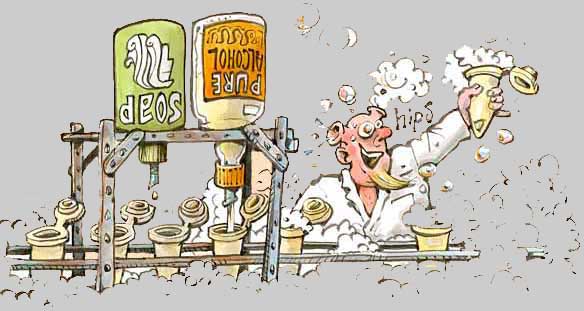|
Overview
Digestions
pGT4ΔB
Electrophoresis
DNA clean-up
Ligation
Fragment isolation
Competent cells
Transformation
Recombinants
pGTλ3758ΔH
Miniprepping
Blotting
Probe Labeling
Hybridisation
Probe Detection
PCR |

Plasmid isolation
Quick ("and dirty") plasmid preparation from a small number of cells
(e.g. in 1.5 ml overnight bacterial cultures) is often referred to as a
"miniprepping".
The general procedure involves six successive steps:
- Lyse the cells with a mixture of NaOH and sodium dodecyl
sulfate (SDS). NaOH will denature DNA and partially hydrolyze RNA. SDS
is a very powerful ionic detergent that will dissolve membranes and
denature proteins.
- Precipitate the SDS-protein/cell debris with a
high concentration of sodium or potassium acetate of low pH (4.8 - 5.2);
K- or Na dodecyl sulfate is largely insoluble in water. The low pH of
the acetate is important, as it neutralizes the alkaline NaOH used in
the previous step and allows renaturation of the plasmid DNA. Small,
covalently closed, circular plasmids, which have both strands at close
proximity after denaturation, will snap back into their original
hydrogen-bonded, double-stranded conformation. Denatured chromosomal DNA
will be unable to renature due to its large size (complexity) and
instead will form small regions of double-stranded structures, in
regions of similar sequence, that will cause aggregation. Addition of
acetate will cause a large clotting of most of the cellular DNA,
membranes, and many assorted proteins. Most of the plasmids and cellular
RNA will not clot. Gentle, but complete, mixing is important, since
vigorous shaking of the mixture will break the bacterial chromosome into
small fragments that will not clot and would thus contaminate the
plasmid preparation.
- Centrifuge the lysate to pellet the clot;
the plasmids should be in the supernatant.
- Precipitate the nucleic
acids in the supernatant with ethanol or isopropanol to permit concentration of the
plasmids and remove many of the RNA fragments. The precipitation is done
at room temperature to reduce the precipitation of smaller RNA
fragments.
- Wash the DNA/RNA pellet with 70% ethanol to remove salts,
(this keeps the DNA and RNA insoluble), dry it and
- dissolve it in
a small volume of a low salt buffer (or water). This buffer may contain
RNase to breakdown the RNA in the miniprep.
The final solution may contain white
insolubilities, which can
easily be removed by centrifugation.
The yield of (high-copy) plasmid DNA from bacterial cultures vary,
but is usually between 1 and 3
μg from 1.5 ml of overnight bacterial culture.
For reasons unknown sofar, Simple Cloning Lab clones pGTλ40 and
pGTλ52 (containing the 3240 and 2752 bp Lambda inserts, resp.) always give a much lower yield.
If you would have to analyse miniprep by restriction analysis,
consider making a so-called Mastermix... |

